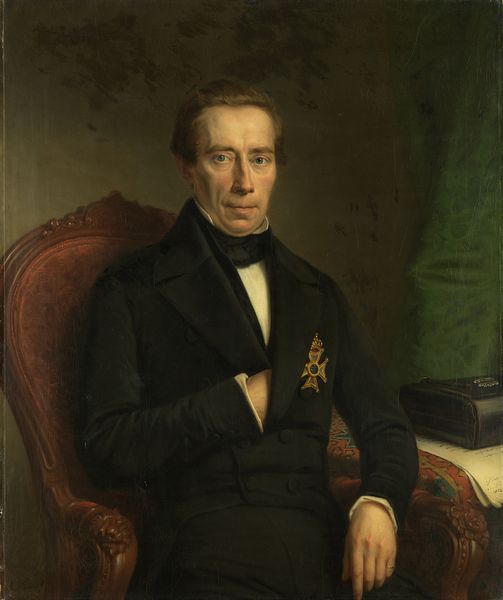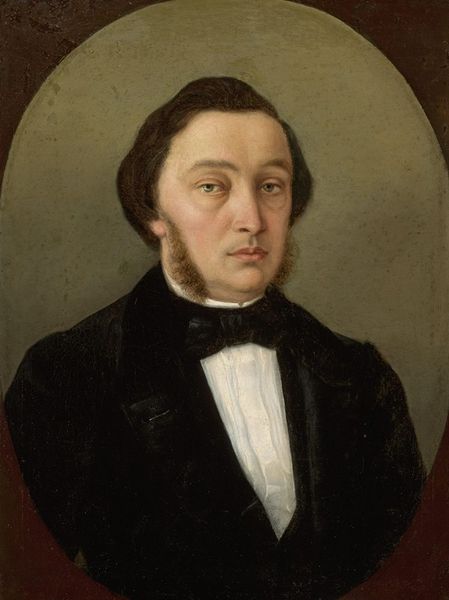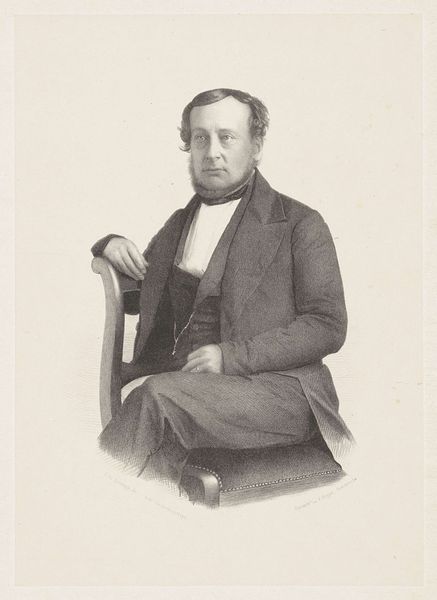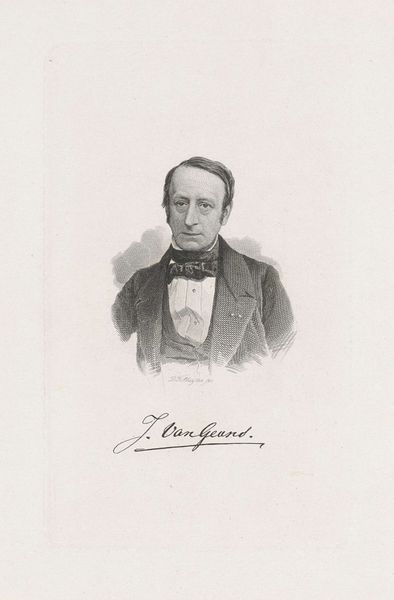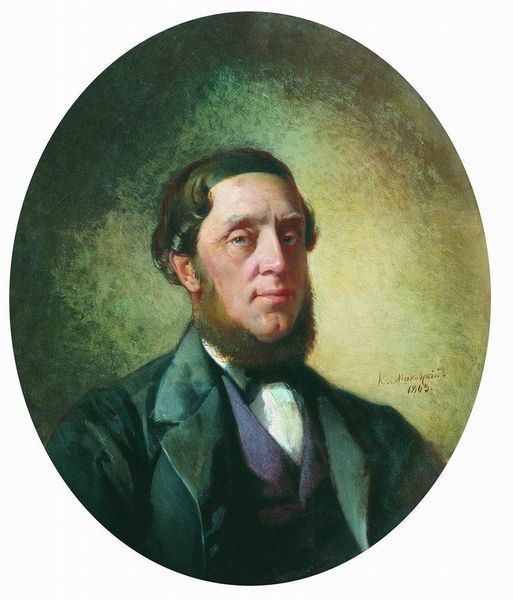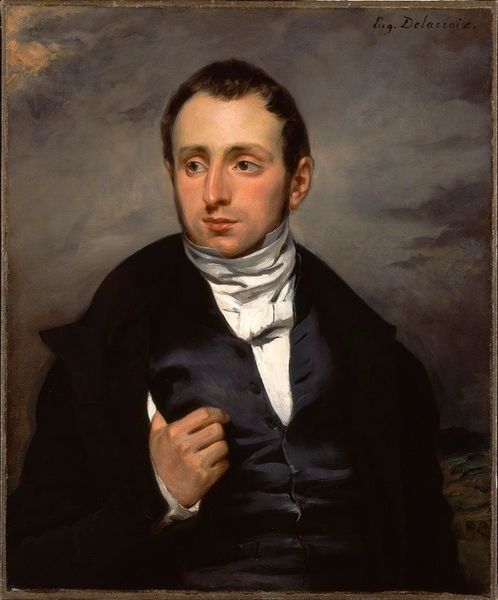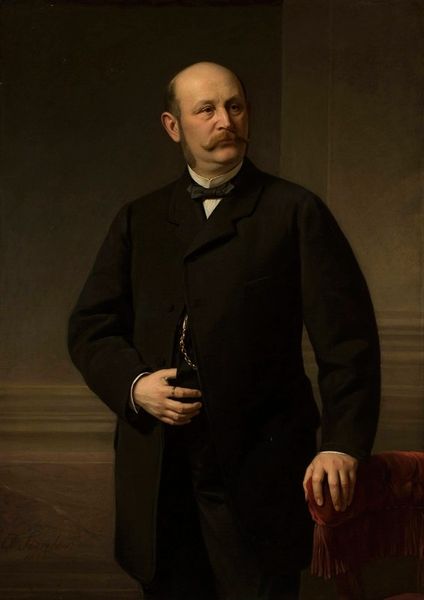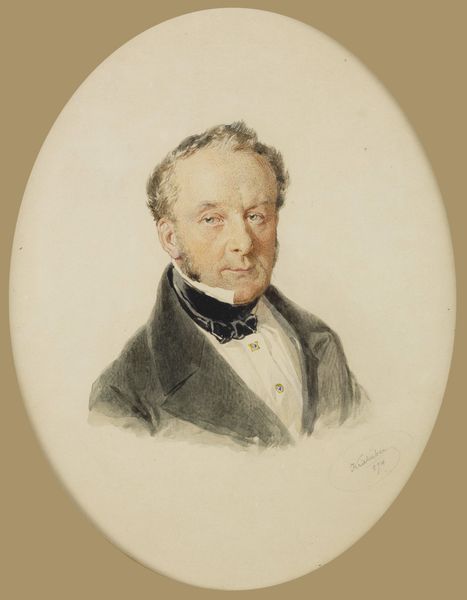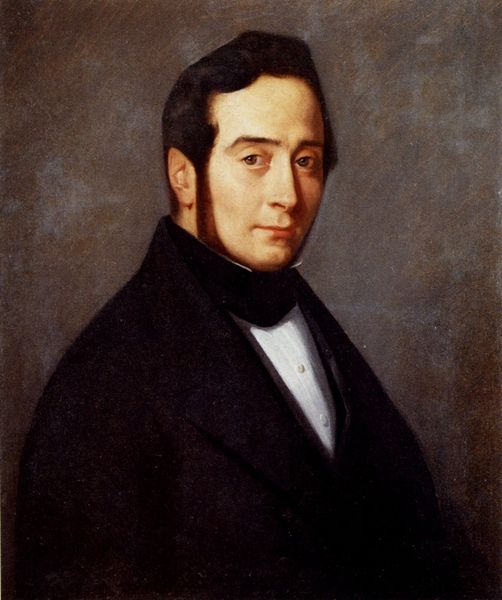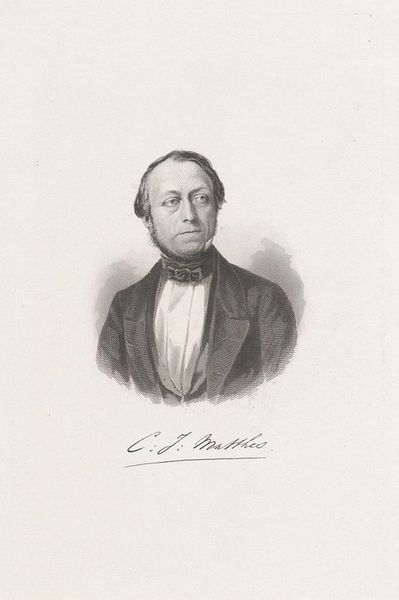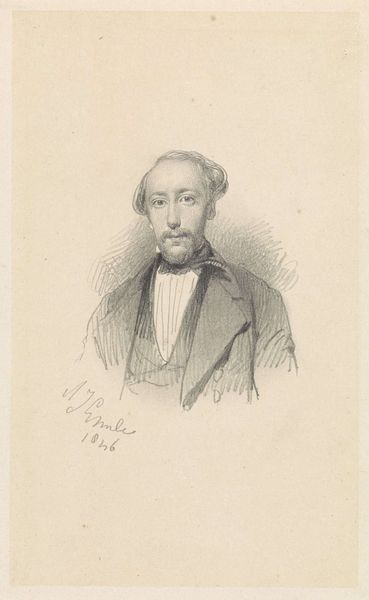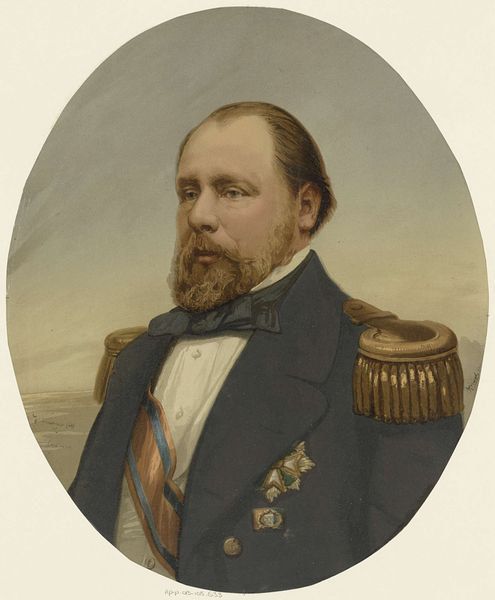
Portrait of Johannes Cornelis van Pappelendam (1810-1884). Artist and Art Dealer. Superintendent of the Van der Hoop Museum 1876
0:00
0:00
johanheinrichneuman
Rijksmuseum
painting, oil-paint
#
portrait
#
portrait
#
painting
#
oil-paint
#
portrait drawing
#
facial portrait
#
academic-art
#
realism
Dimensions: height 76.5 cm, width 62.5 cm, depth 11.3 cm
Copyright: Rijks Museum: Open Domain
Editor: Here we have a portrait of Johannes Cornelis van Pappelendam, painted in 1876 by Johan Heinrich Neuman using oil on canvas. The sitter looks quite formal and… well, bourgeois. What’s your read on this portrait, beyond its surface depiction? Curator: Indeed, let’s look beneath that surface. It's critical to understand this portrait as more than just an individual likeness. Pappelendam was not only an art dealer, a position imbued with power, but also a superintendent of a museum, a gatekeeper of culture. Doesn’t his very presence here in the collection become a statement about the institutional structures that dictate what is valued as art, and *who* gets to decide? Editor: That’s a perspective I hadn't fully considered. It flips the image. What visual cues might support your argument? Curator: Note the very conventional composition: formal attire, subdued palette, controlled expression. Neuman adopts an artistic language designed to project authority and respectability. Do you see any element of the subversive here? Perhaps a disruption of societal or artistic expectations? Editor: No, it feels very much within the established norms of portraiture. The emphasis feels intended to reinforce those norms. Curator: Precisely. The painting becomes less about capturing an individual and more about solidifying Pappelendam's position within a specific power dynamic. Reflect on the implications: Who is included, and, more importantly, who is excluded, from this historical record? Editor: So, it's not just about *who* is portrayed but about the values the portrait upholds. I'll definitely carry that thought with me. Curator: Yes. Looking at art with a socially conscious eye means acknowledging these structures and questioning their impact. Every brushstroke, in its own way, serves this grand narrative.
Comments
No comments
Be the first to comment and join the conversation on the ultimate creative platform.
